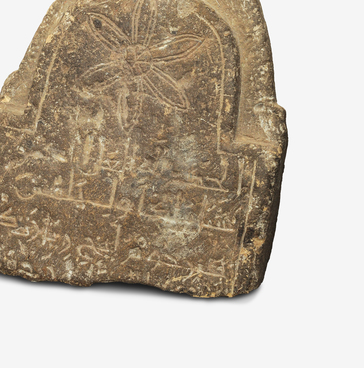The section of decorative and applied arts of the Ulyanovsk Regional Museum of Local Lore named after Ivan Goncharov presents a tobacco pipe made in the early 19th century.
The pipe from the museum’s collection is made of ivory. The outside of the bowl is decorated with carvings depicting two deer. The upper part of the bowl had a metal finish and a hinged lid. Along the edge of the lid there are grooves with shaped holes. The top of the lid features a wreath with perforated leaves and a round medallion with a chased portrait of the Prussian Field Marshal Gebhard Leberecht von Blücher (1742–1819) and the inscription “Fürst Blücher v. Wallstatt”. The chibouk is inserted into a metal cap with a pipe and a ring. The central part of the chibouk is made of horn rings, the mouthpiece is long, thin and slightly curved.
There are many versions as to when and where smoking pipes first appeared. Reeds, horns and hollow animal bones were the most ancient prototypes of tobacco pipes. According to one version, America was the birthplace of smoking pipes. The Mayan and Aztec Indians, who lived over 3,000 years ago in Central America, smoked pipes made of clay and red stone (catlinite), which they considered a sacred “pipestone”. Smoking itself was considered part of a ritual and a means of communication with the deities. The British were the first to master the mass production of tobacco pipes in 1575. Then the city of Gouda became the center of pipe production in Europe. The Dutch used white kaolin clay as a raw material. Very quickly, the German city of Cologne began to challenge Gouda’s reputation as the leading European center of pipe production. Russia became acquainted with tobacco later than most European countries. The fashion for smoking tobacco was introduced by Peter the Great, who was an avid smoker himself.
There were no pipes produced in Russia at the end of the 17th century. In the 18th century, smoking became the favorite pastime throughout all social classes. And while the common people and petty officials took a particular liking to snuff, the nobility indulged themselves by using luxurious smoking pipes. Russian aristocrats preferred so-called cabinet pipes — with a chibouk up to over a meter and a porcelain bowl for 20–30 grams of tobacco. Later, after the Napoleonic wars, French-made pipes became widespread first in the Russian army, and then everywhere — they had intricately carved bowls made by the Gambier company from the Ardennes and the factory in Saint-Omer.


